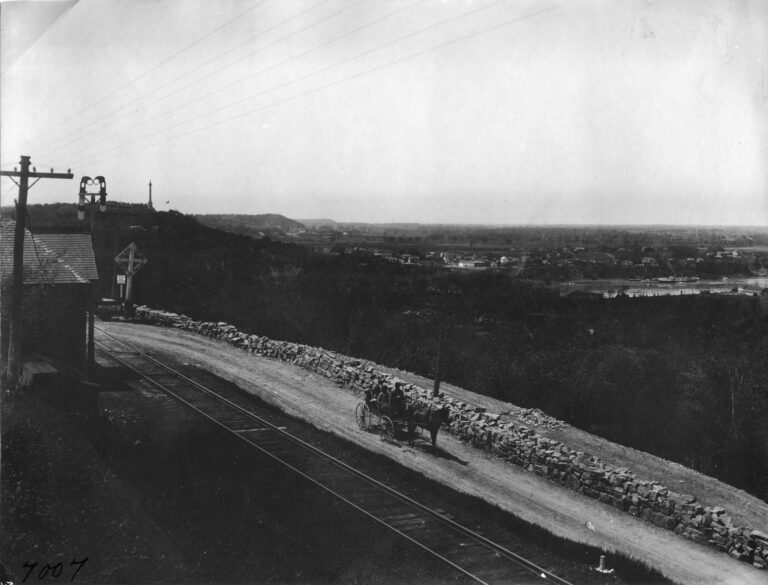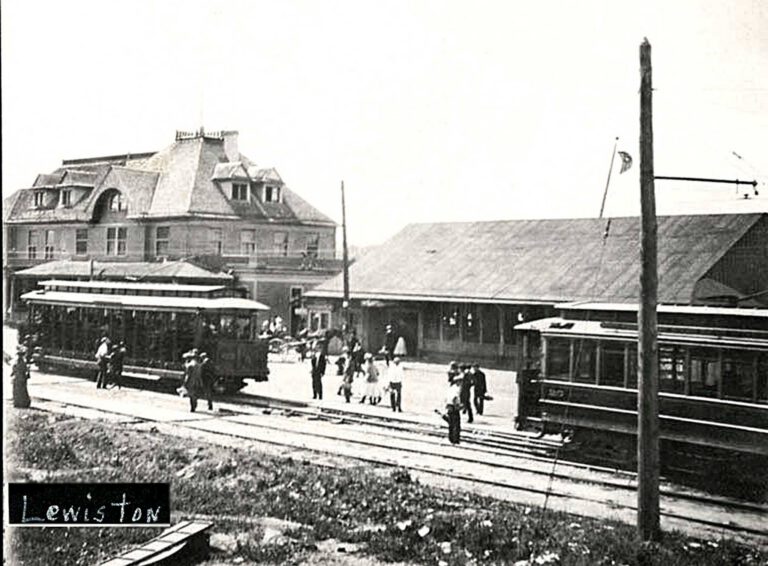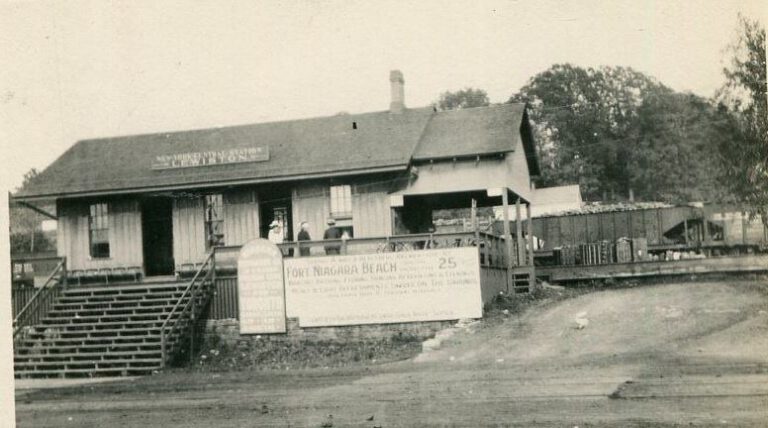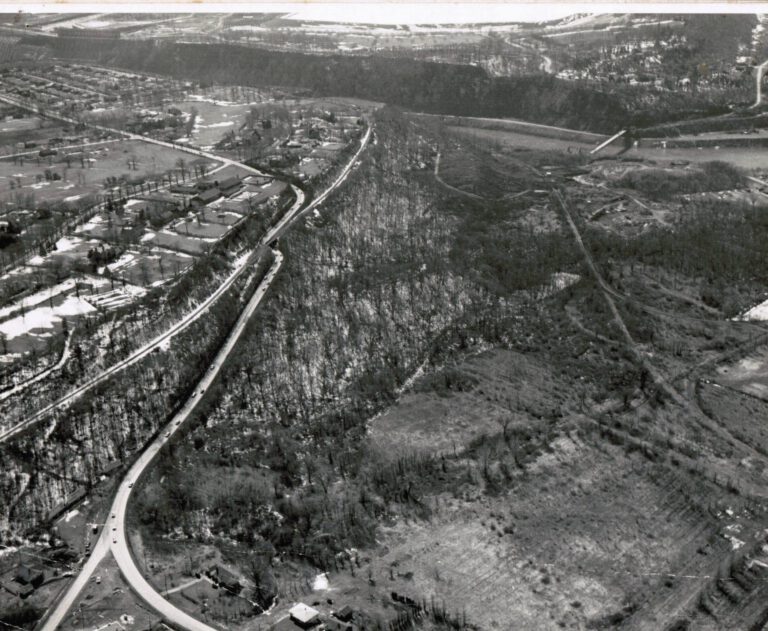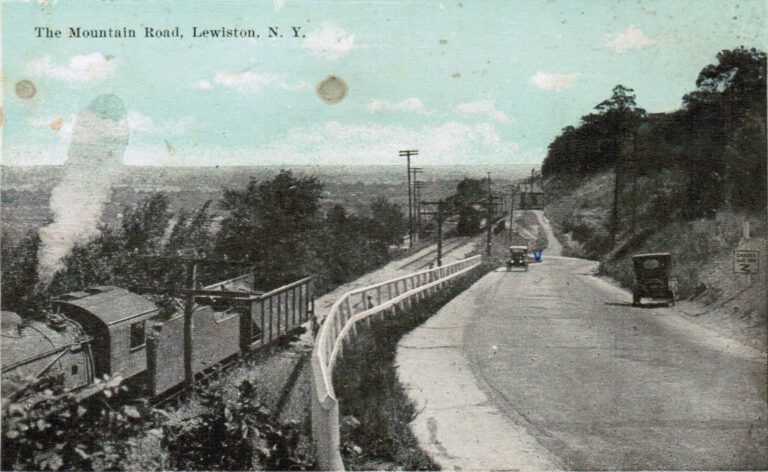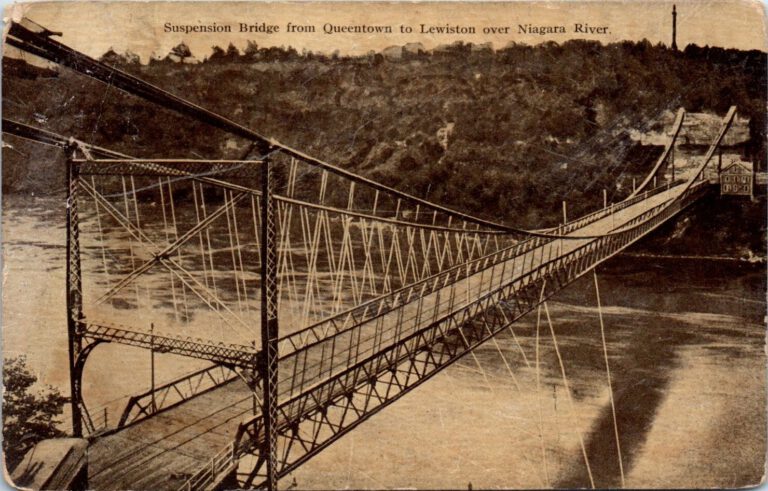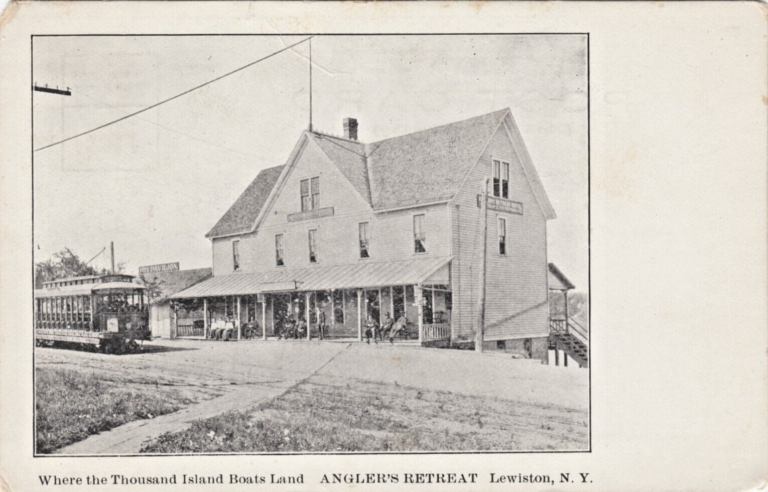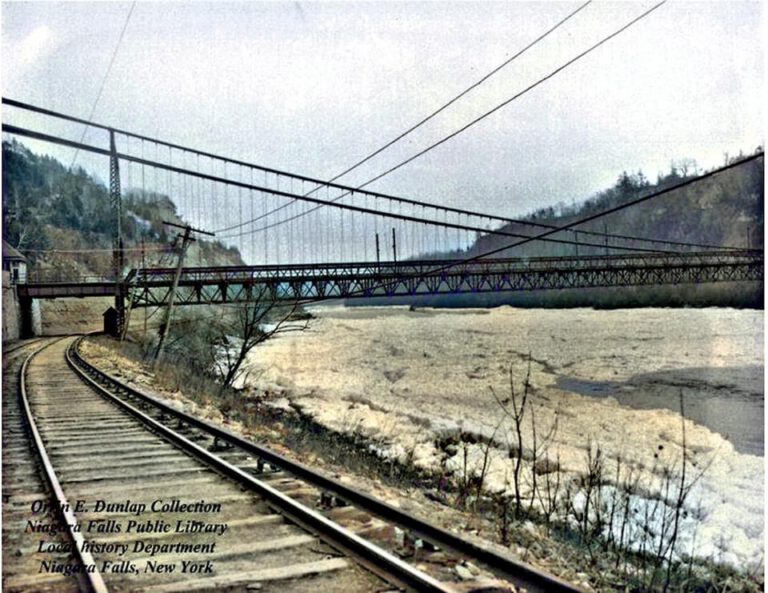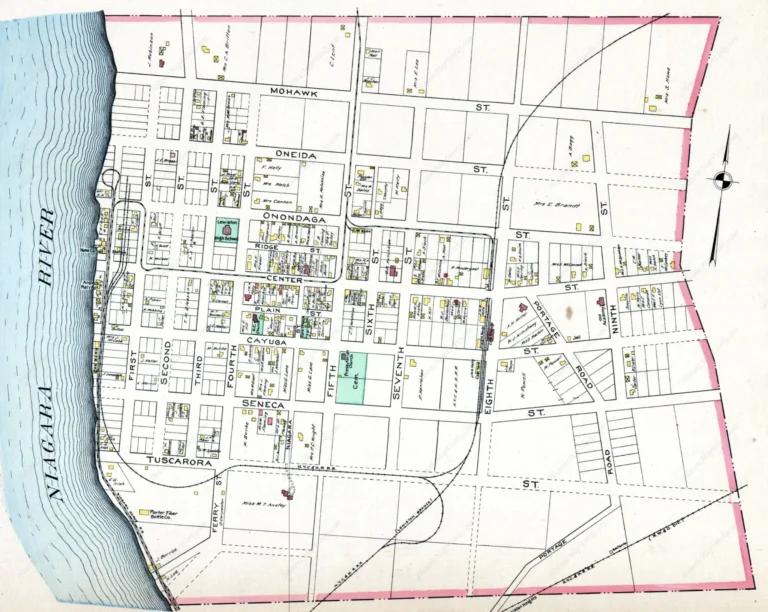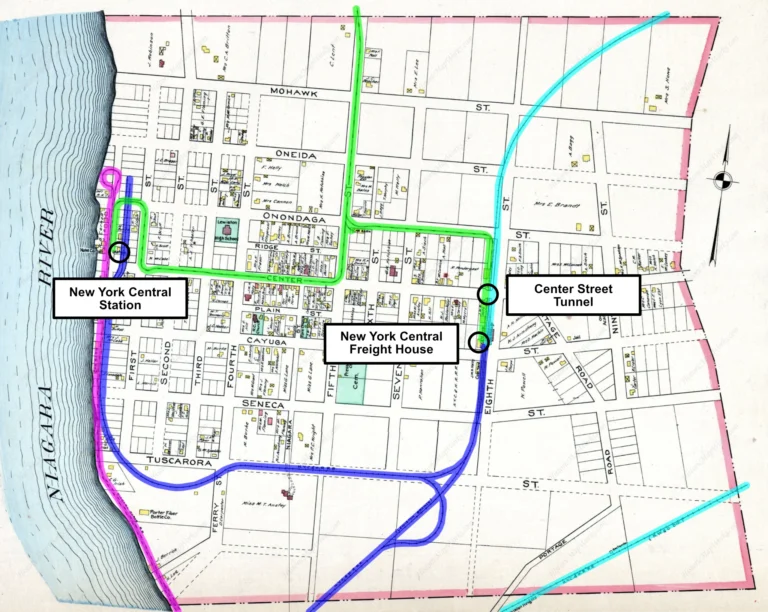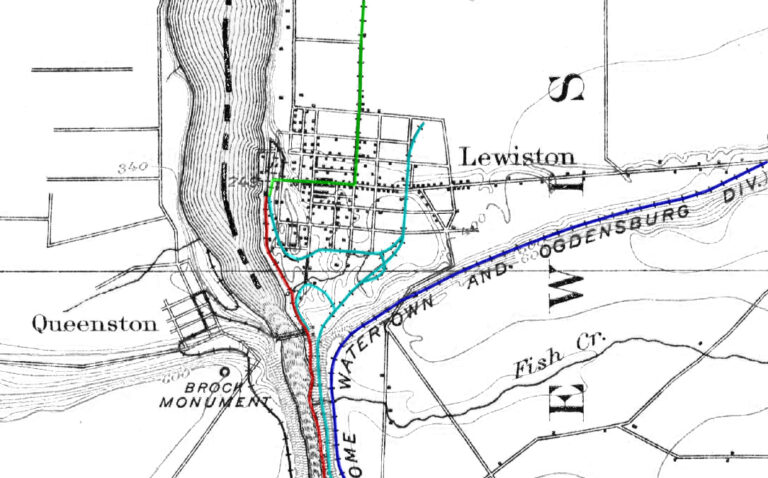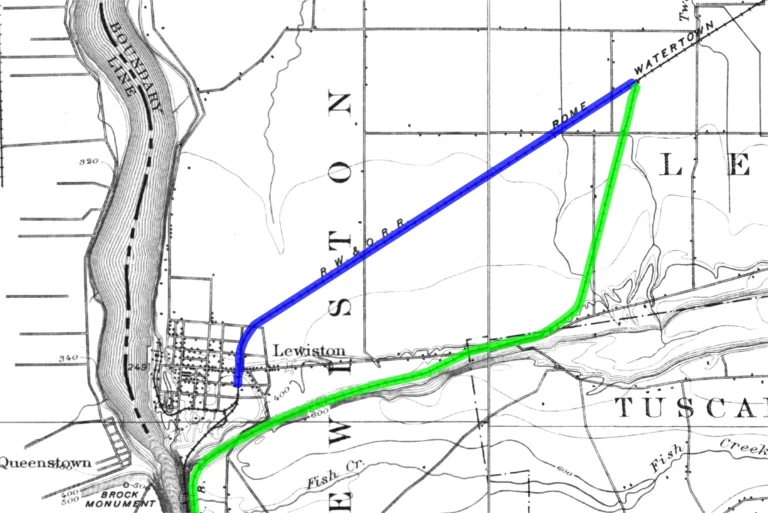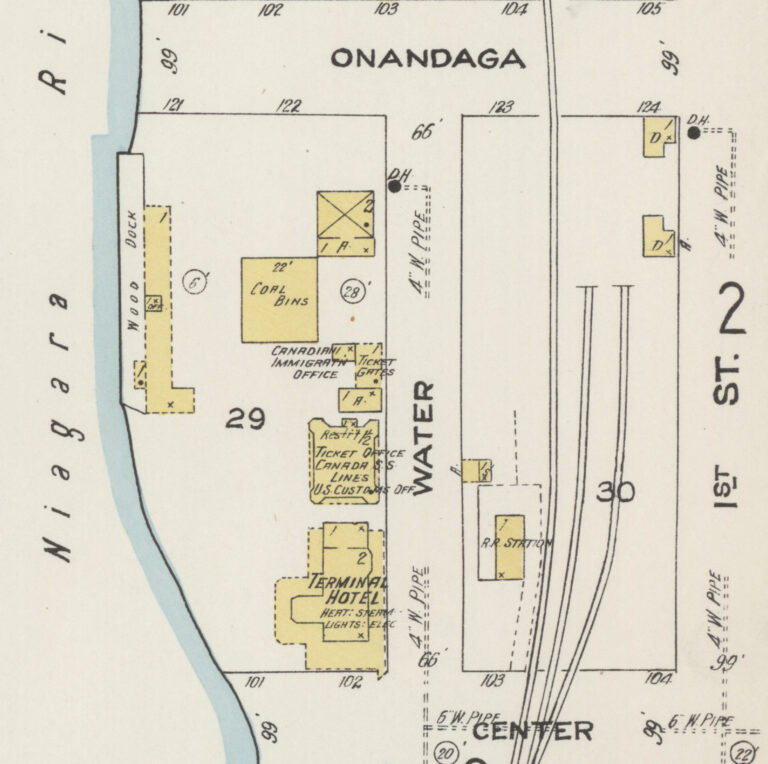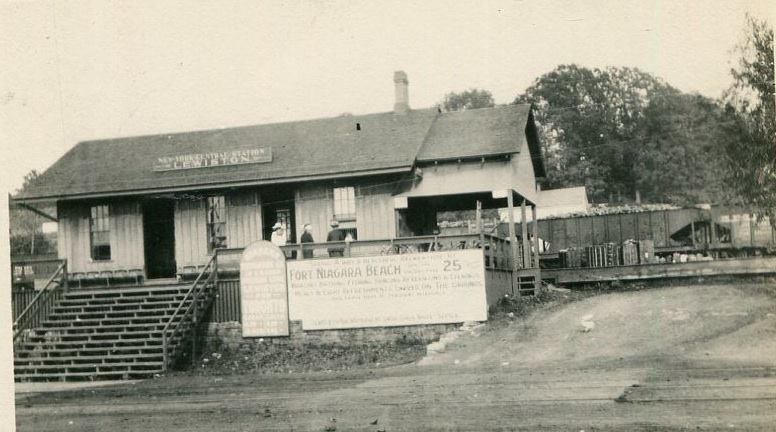
Lewiston, NY is a village on the Niagara River north of Niagara Falls. It was served by a number of railroads over the years, including the New York Central (NYC) Railroad Niagara Falls Branch, the Rome Watertown and Ogdensburg Railroad (later part of the New York Central), Lewiston and Youngstown Frontier Railway, and the Niagara Gorge Railroad.
New York Central Niagara Falls Branch
The Niagara Falls Branch of the New York Central Railroad ran from Buffalo to Lewiston, passing through Tonawanda, Niagara Falls, and Suspension Bridge. It ran along the edge of the Niagara River north from Suspension Bridge and descended to water level when it reached Lewiston. In Lewiston it served multiple industries and customers. It also connected here with the Lewiston and Youngstown Frontier Railway, which ran north of Lewiston to Youngstown, a distance of just over seven miles.
The New York Central had a passenger station in the village of Lewiston on the east side of Water Street just north of Center Street. Today a parking lot for the Lewiston Landing Park stands where the station used to be. The station was just across from the boat landing where passengers could connect to steamships operating across Lake Ontario to Toronto and through the St. Lawrence Seaway to the Thousand Islands tourist area.
The branch from Suspension Bridge to Lewiston was abandoned in November of 1950.
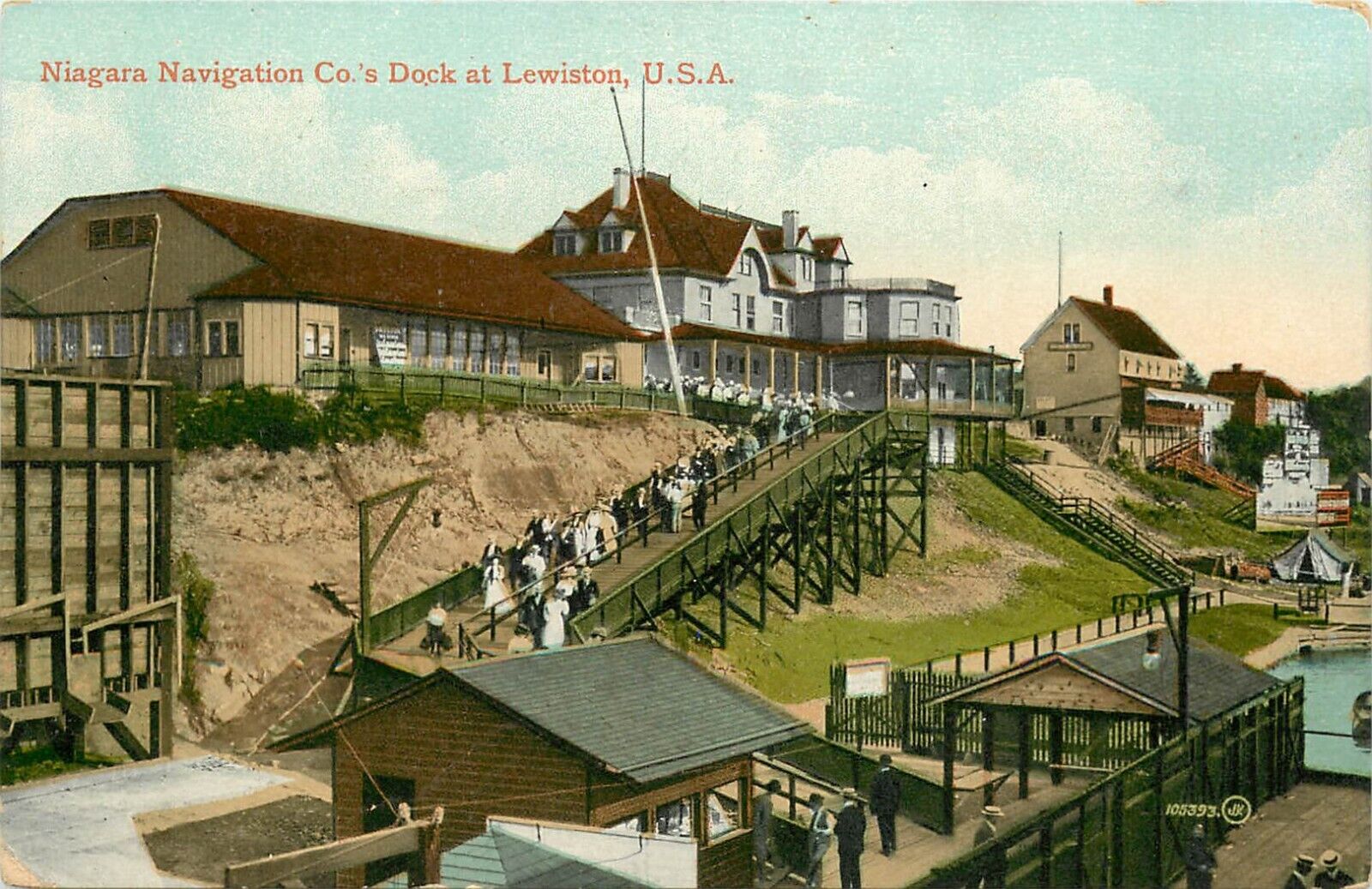
New York Central Hojack Line
The second major steam railroad to service Lewiston was the Rome, Watertown and Ogdensburg (RW&O) Railroad who had their Lewiston Heights station, south of the village on the side of the Niagara Escarpment. The line between Oswego and Niagara Falls was commonly referred to as the “Hojack line.”
The Rome, Watertown and Ogdensburg Railroad (RW&O) completed construction of the line from Lewiston to Oswego on June 12, 1876. The RW&O operated the line until March 1891 when the company was leased to the New York Central and Hudson River Railroad. The line was operated by the New York Central (1891 – 1968), the Penn Central Railroad (1968 – 1976) and Conrail. The line was redundant with others operated by Conrail and by the late 1970s the entire line between Oswego and Niagara Falls had been abandoned or, in a few cases, sold to smaller railroads to operate small sections.
When it was built, the RW&O ran from the north into downtown Lewiston where it had a connection with the New York Central Railroad. The predecessor of the RW&O, the Lake Ontario Shore Railroad, was organized in 1868 and was planned as part of a larger system connecting Boston with the West. As part of this plan, the railroad envisioned a railroad bridge across the Niagara River connecting Lewiston with Queenston, Ontario. By the late 1870s it was apparent that the railroad bridge would not be built, leaving the RW&O with only a connection to the Lewiston branch of the New York Central Railroad and no connections to other roads extending to the West.
To ensure better connections, in 1880, the RW&O organized and then leased the Niagara Falls Branch Railroad Company. This company built a new railroad, starting from a point four miles north-east of the village at Lewiston Junction, and running to Suspension Bridge, where it connected to different railroads heading west. This new line bypassed the main village of Lewiston, passing nearly three-quarters of a mile from its business center. This new line ran along the face of the Niagara Escarpment, a steep cliff that separated the lower area along Lake Ontario with the higher ground to the south. The track going uphill from Lewiston Junction to Suspension Bridge was much different than the rest of the railroad which was mostly straight and almost entirely flat.
The Hojack line from Suspension Bridge to Lewiston was abandoned in the late 1960s and the track torn up during the construction of the Niagara Power Project.
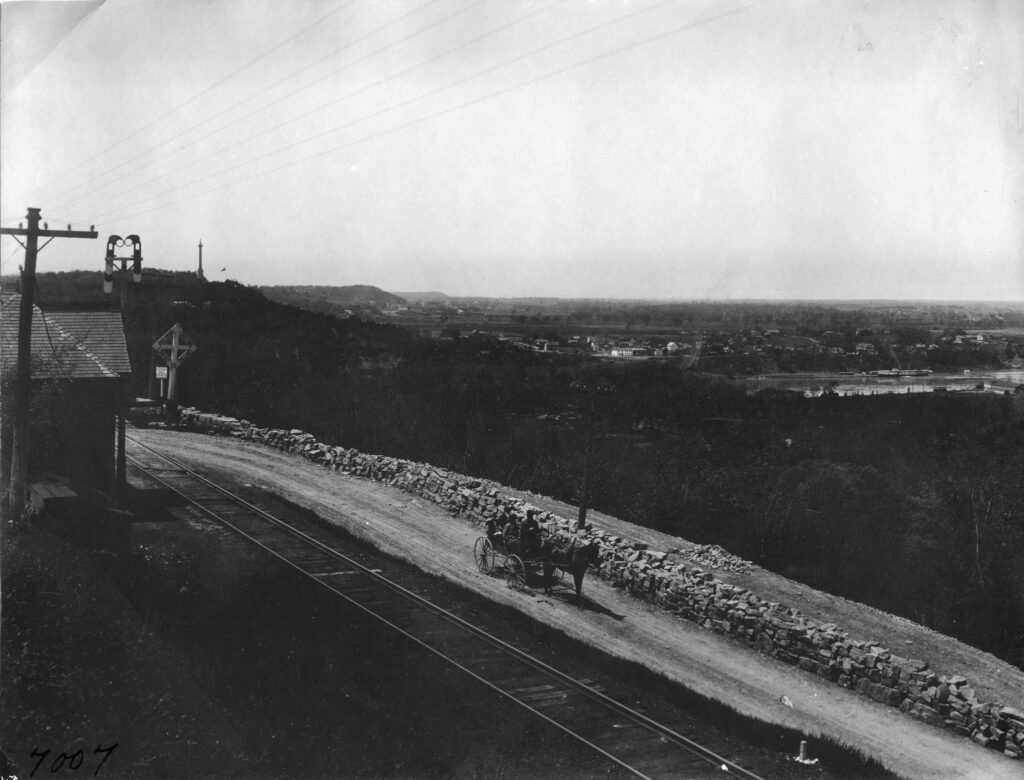
The Lewiston Heights Station sat on the cliff just east of Lewiston village. Originally the road going up the escarpment between Lewiston and Lewiston heights crossed the train tracks at grade (as seen in this photo). Later the road passed under the tracks, which were on a short bridge, as shown below.
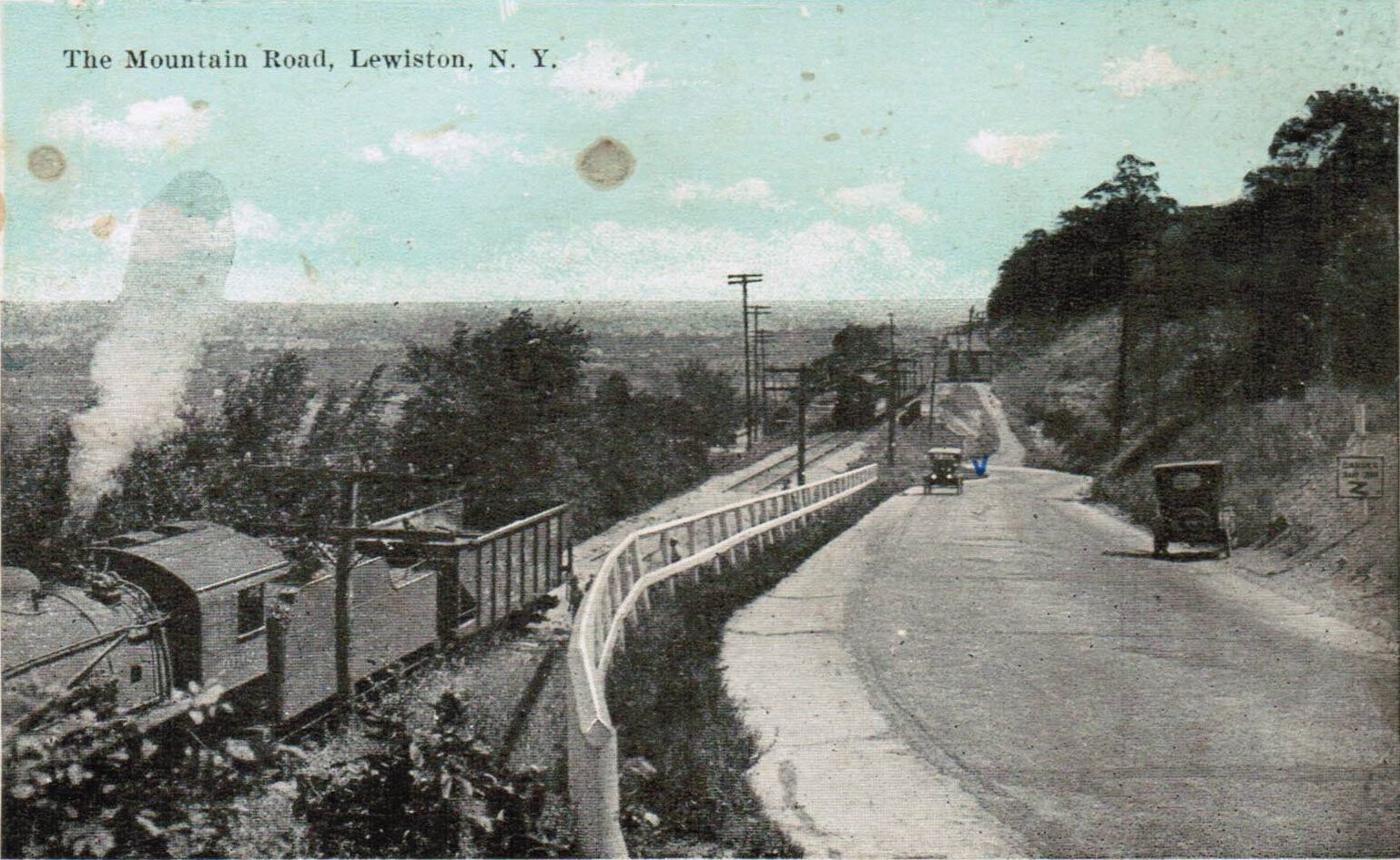
Lewiston and Youngstown Frontier Railway
The Lewiston and Youngstown Frontier Railway was a short, 8-mile-long, railroad that ran between the two towns. It ran through the fertile fruit-growing areas of the region and carried apples, peaches, and grapes to Lewiston, where it connected with the New York Central. It also carried passengers and connected with the New York Central at its station in downtown Lewiston.
Niagara Gorge Railroad
Lewiston was the northern terminus of the Niagara Gorge Railroad, part of the Great Gorge Route, an electric interurban railway which ran at the bottom of the Niagara Gorge (at water level) from Niagara Falls to Lewiston.
Clippings
Station Photographs
Other Photographs
Maps
Timetables
Learn More
- Historical Association of Lewiston and Museum
- “HOJACK IN THE LEWISTON/NIAGARA FALLS AREA” – discussion on railroad.net forums
- “Lewiston Railroad Tunnel” – discussion on Facebook with numerous photos.
